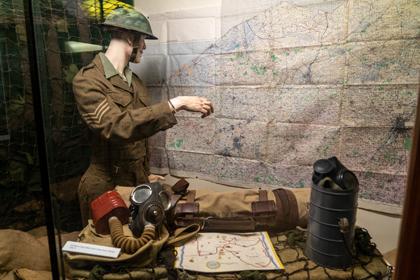Record details
| British Expeditionary Force 1939 | |

|
|
|
Case with a mixture of authentic and replica objects representing the 2nd Battalion, Northamptonshire Regiment which was also part of the Regular Army. Throughout the war, the battalion was assigned to the 17th Infantry Brigade which formed part of the 5th Infantry Division. The 2nd battalion first saw active service in the war as part of the British Expeditionary Force. |
|
| 1939 | |
| Mixed material | |
|
British Expeditionary Force (BEF) was the name of the British Army in Western Europe during the Second World War from 2 September 1939 when it was formed until 31 May 1940. General Lord Gort was appointed to the command of the BEF on 3 September 1939 and the BEF began moving to France on 4 September 1939. The BEF assembled along the Belgian and French border and took their post to the left of the French First Army under the command of the French 1st Army Group. Most of the time spent from September 1939 to 9 May 1940 was digging field defences on the border. When the Battle of France began on 10 May 1940, the BEF constituted 10 percent of the Allied forces on the Western Front. A local counter-attack at the Battle of Arras, 21 May, 1940 was a tactical success but the BEF, French and Belgian forces north of the Somme retreated to Dunkirk on the French North Sea coast soon after. British and French troops were then evacuated in Operation Dynamo, 26 May to 4 June, 1940. |
|
| On display in the Military Galleries at Abington Park Museum |
